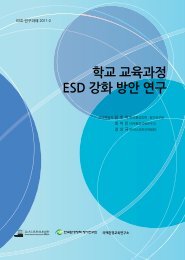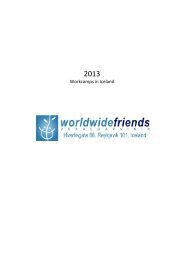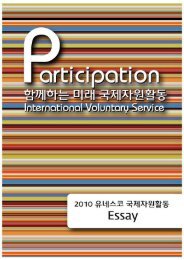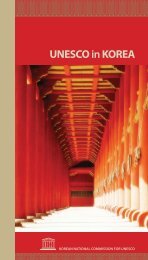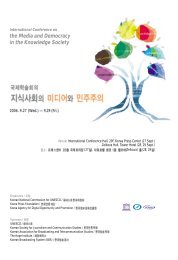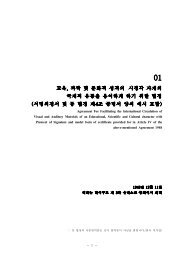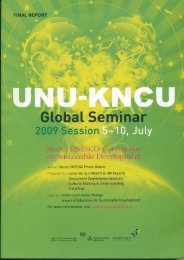íëìë³´ë2012문íì ë°ì ë¼ì´ëí ì´ë¸.pdf - ì ë¤ì¤ì½íêµììí
íëìë³´ë2012문íì ë°ì ë¼ì´ëí ì´ë¸.pdf - ì ë¤ì¤ì½íêµììí
íëìë³´ë2012문íì ë°ì ë¼ì´ëí ì´ë¸.pdf - ì ë¤ì¤ì½íêµììí
Create successful ePaper yourself
Turn your PDF publications into a flip-book with our unique Google optimized e-Paper software.
What has recently come under the spotlight is the use of mobile technology to ensure that<br />
the poor in developing countries have greater access to financial services. Widely used even<br />
among the poor, mobile phones are utilized in receiving social welfare benefits, or making<br />
payments and deposits, thereby guaranteeing efficiency and reducing transaction costs.<br />
In particular, the British Department for International Development (DFID) utilizes its<br />
knowhow from the country's advanced financial sector to help the poor in developing<br />
economies have better access to financial services. Based on their experience of developing<br />
fair trade, the DFID promotes fair trade for the development of private sectors in recipient<br />
countries. The United Kingdom pursues the most active level of private sector development<br />
among donor countries by developing innovative business models and catalyzing private<br />
investment in education, public health, and other basic services. It also emphasizes private<br />
sector development in marginalized countries. Direct governmental involvement does not<br />
take place often; most of the projects are undertaken in the form of separate funds or<br />
financing collected for private organizations. Capitalizing on its competitiveness in the<br />
financial sector, the country provides technology development funds for microfinance<br />
providers to help improve financial access 8 .<br />
Similarly, the United States Agency for International Development (USAID) expanded the<br />
department for public-private cooperation into the Office of Innovation and Development<br />
Alliances (IDEA) in 2012. With a former business consultant as its director, the office<br />
executes private sector development strategies that implement innovative and creative ideas<br />
according to the condition and environment of recipient countries 9 .<br />
2) Sector - Convergence with Overall Areas of Development<br />
This means that the underlying economic value of culture is realized in combination with<br />
the overall sectors of development. It is the closest domain to culture as a separate sector, but<br />
the convergence with other areas is carried out given that culture is still not a sector on its<br />
own. Here are the prime examples of convergence between culture and industry, or culture<br />
and education that indicate the scope of this domain:<br />
A. Culture Converged with Industry (The Preservation of Cultural Heritage to Ensure<br />
Development and Cultural Independence)<br />
<br />
8 Jeong, Jiseon and Juyeong Lee (2011). The current status of international support for private sector<br />
development and challenges ahead of Korea. Korea Institute for International Economic Policy. p. 128.<br />
9 http://idea.usaid.gov/



